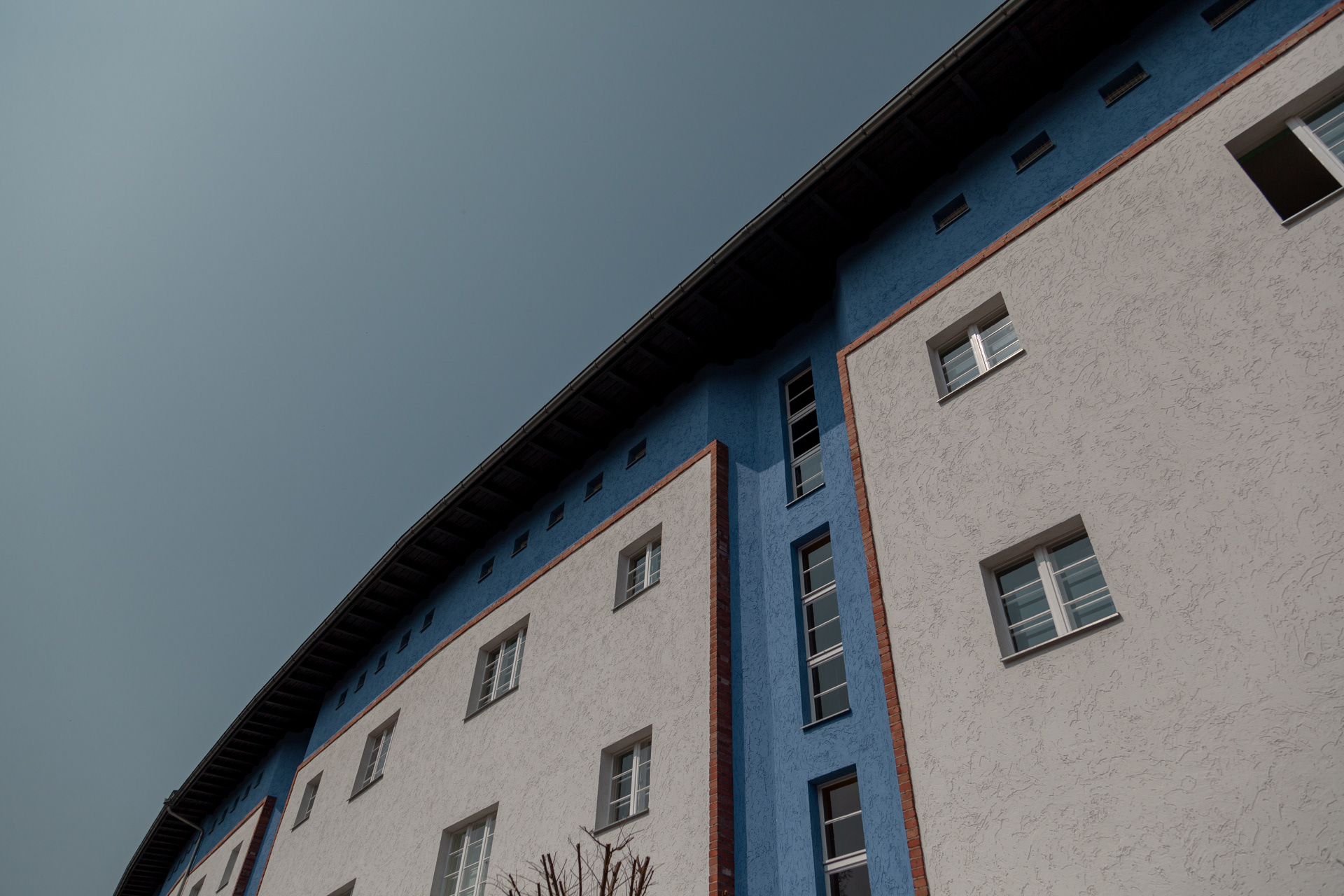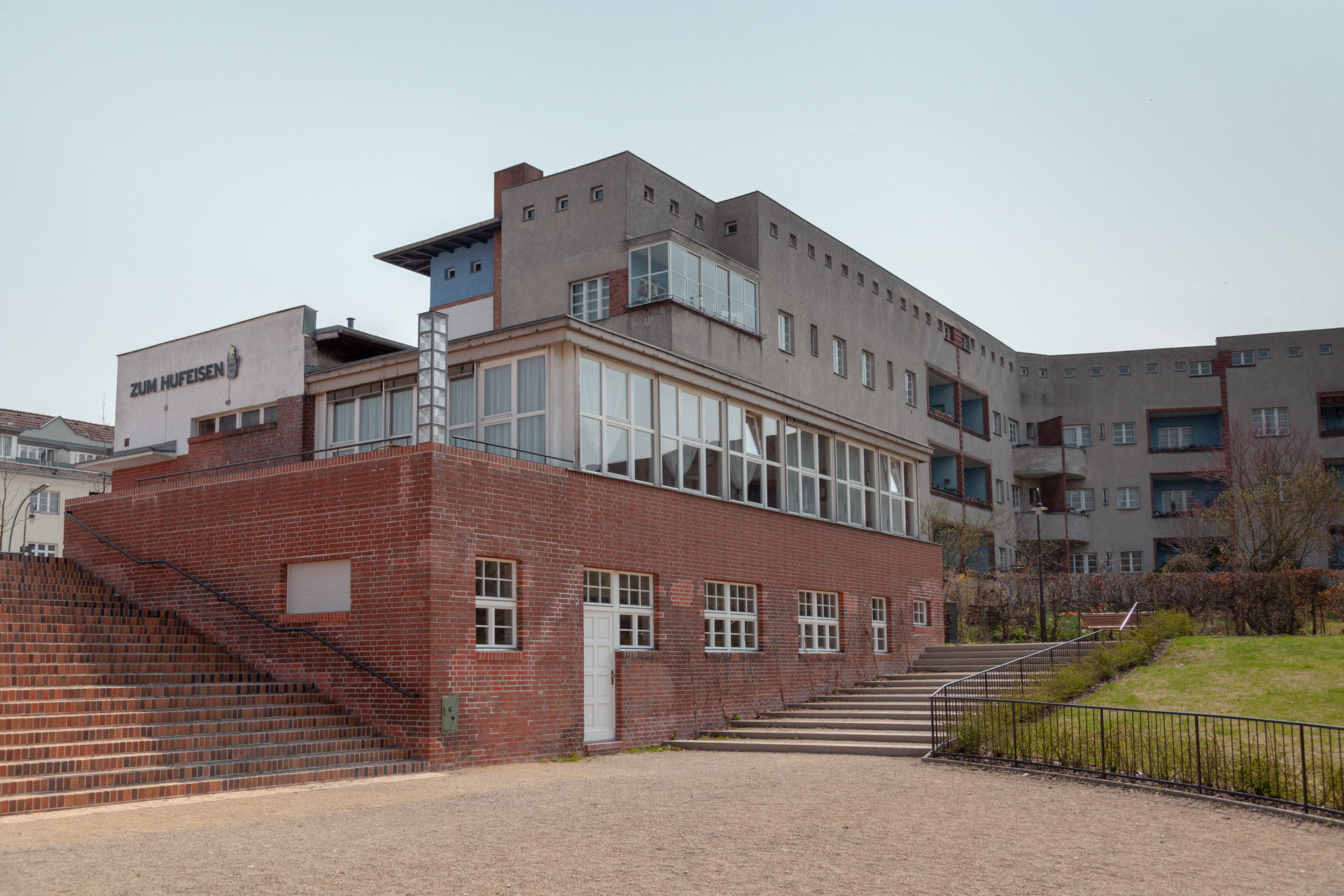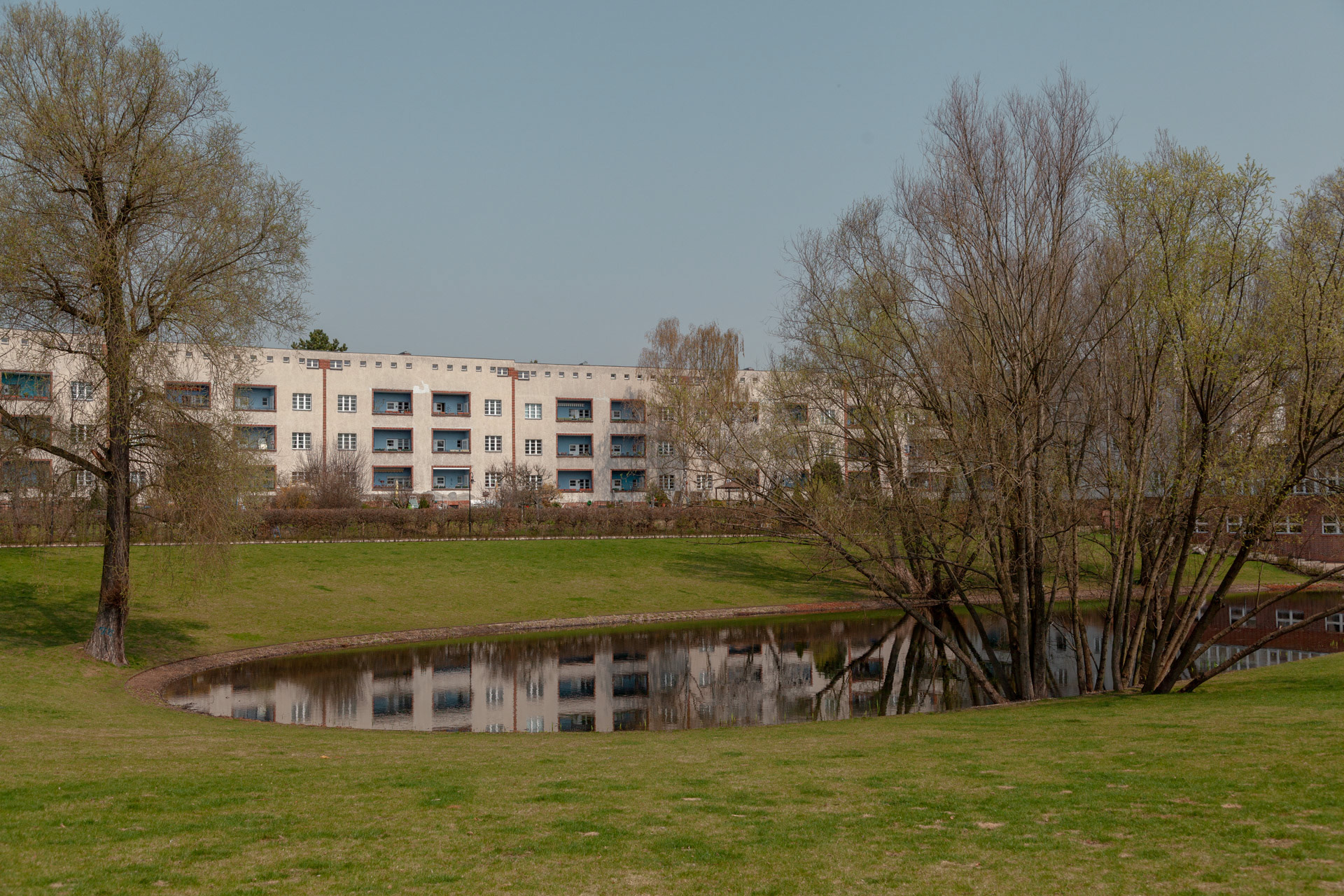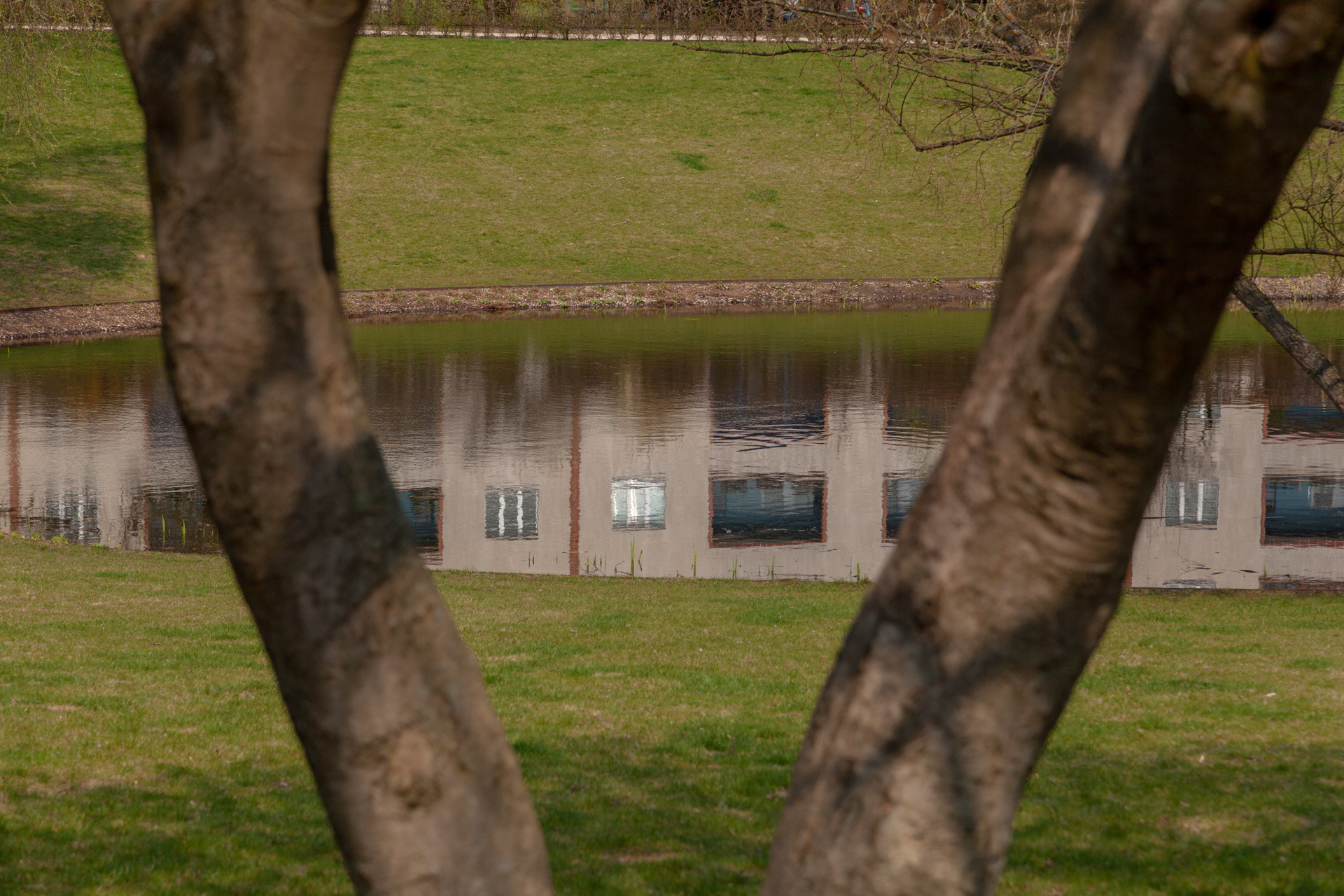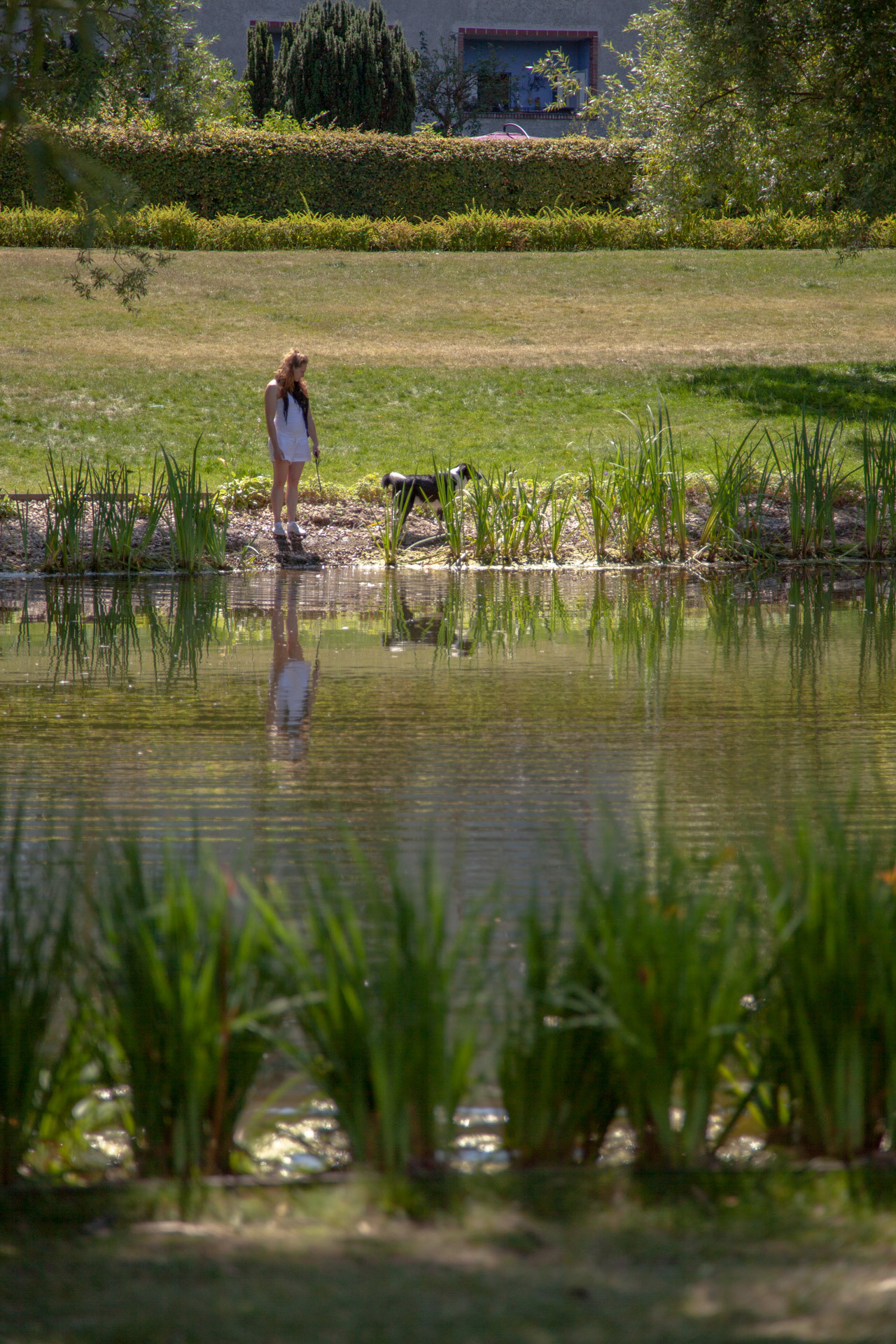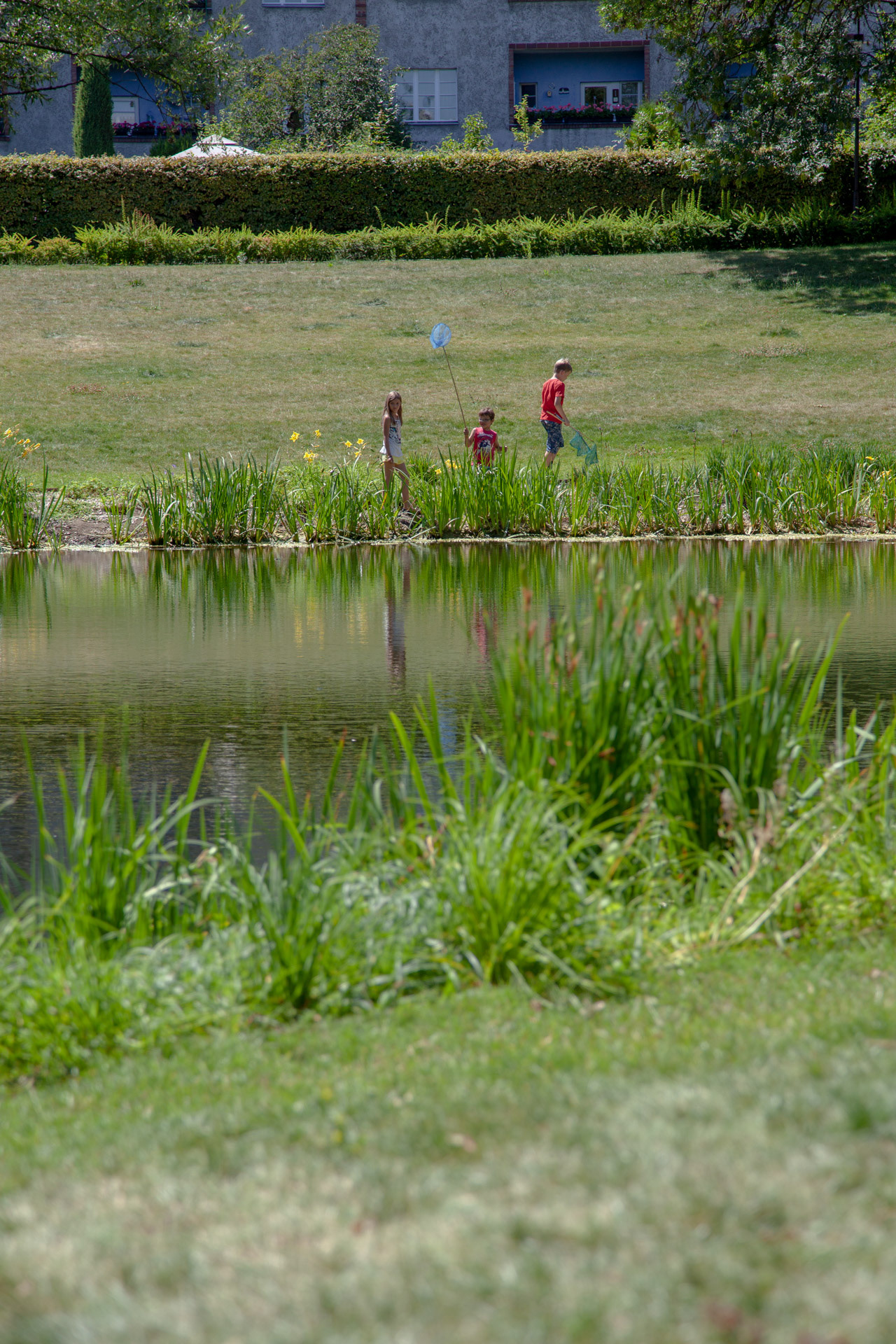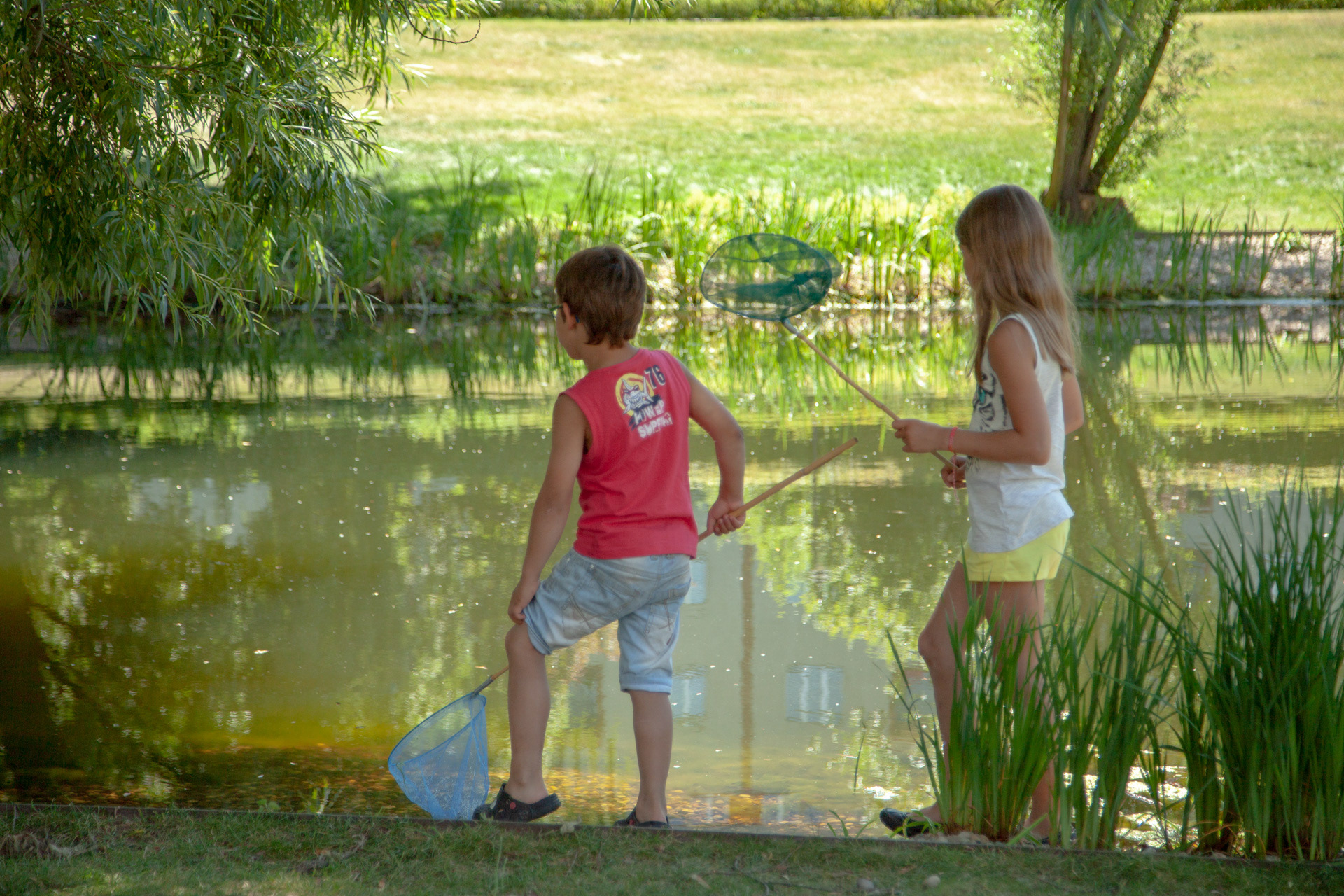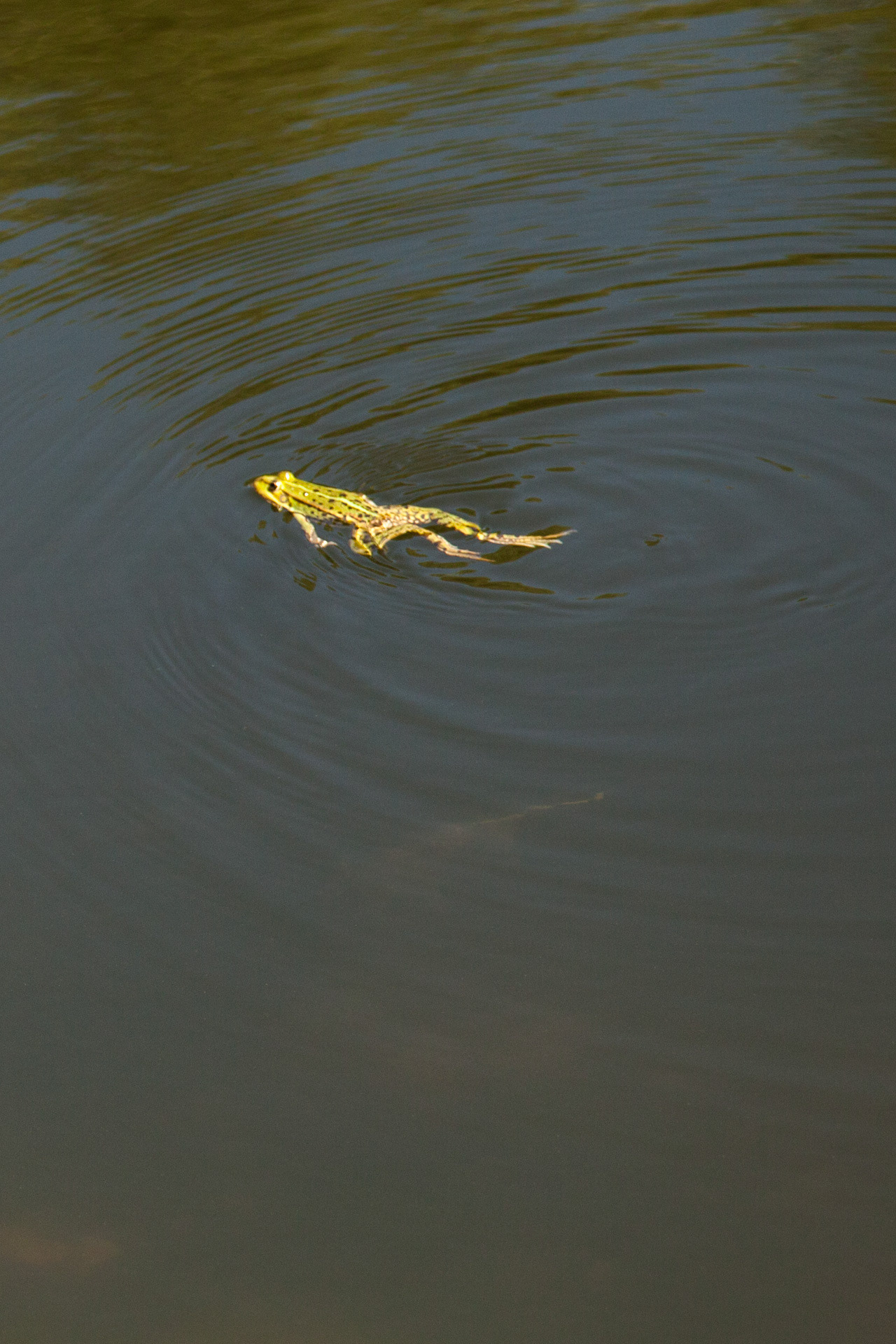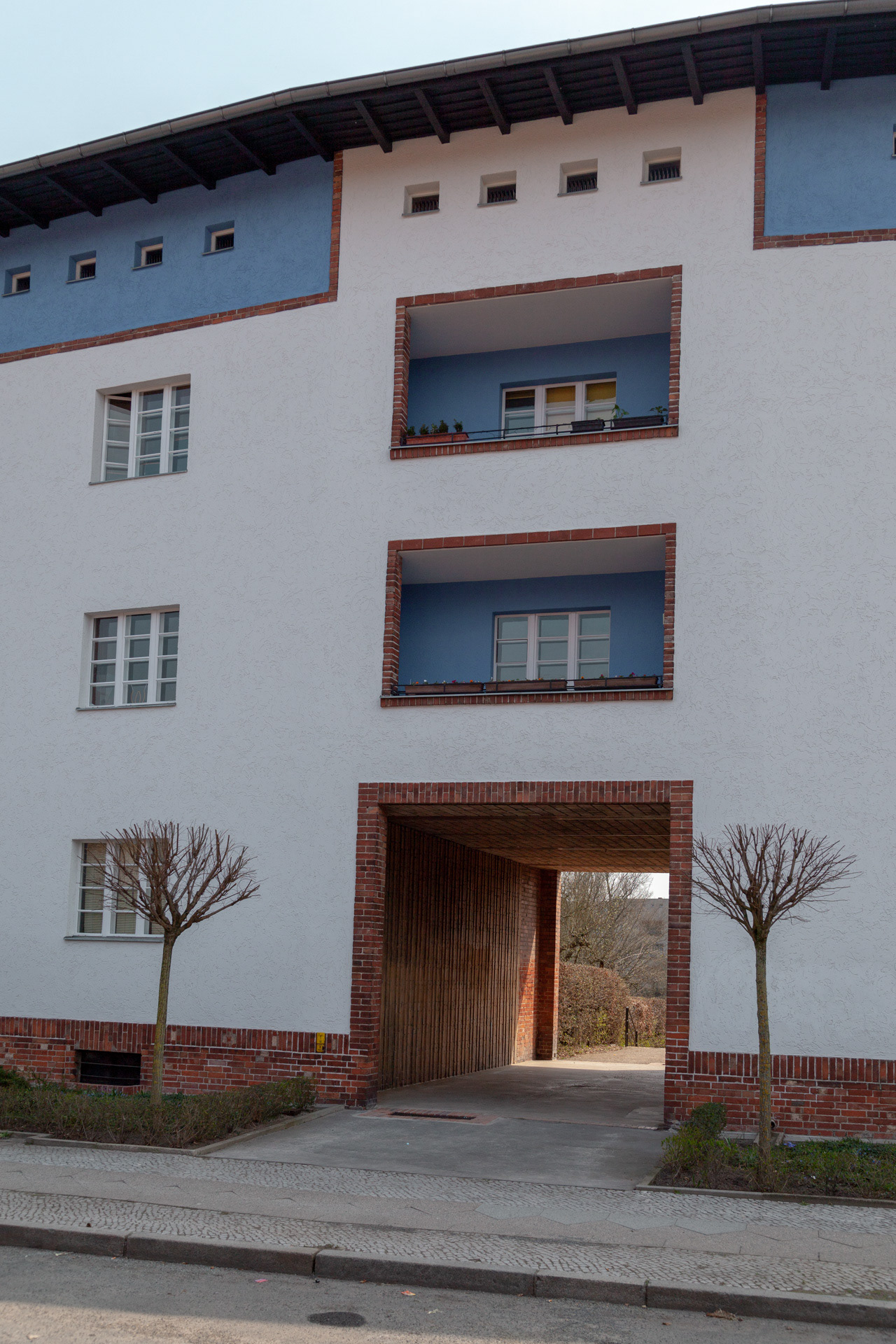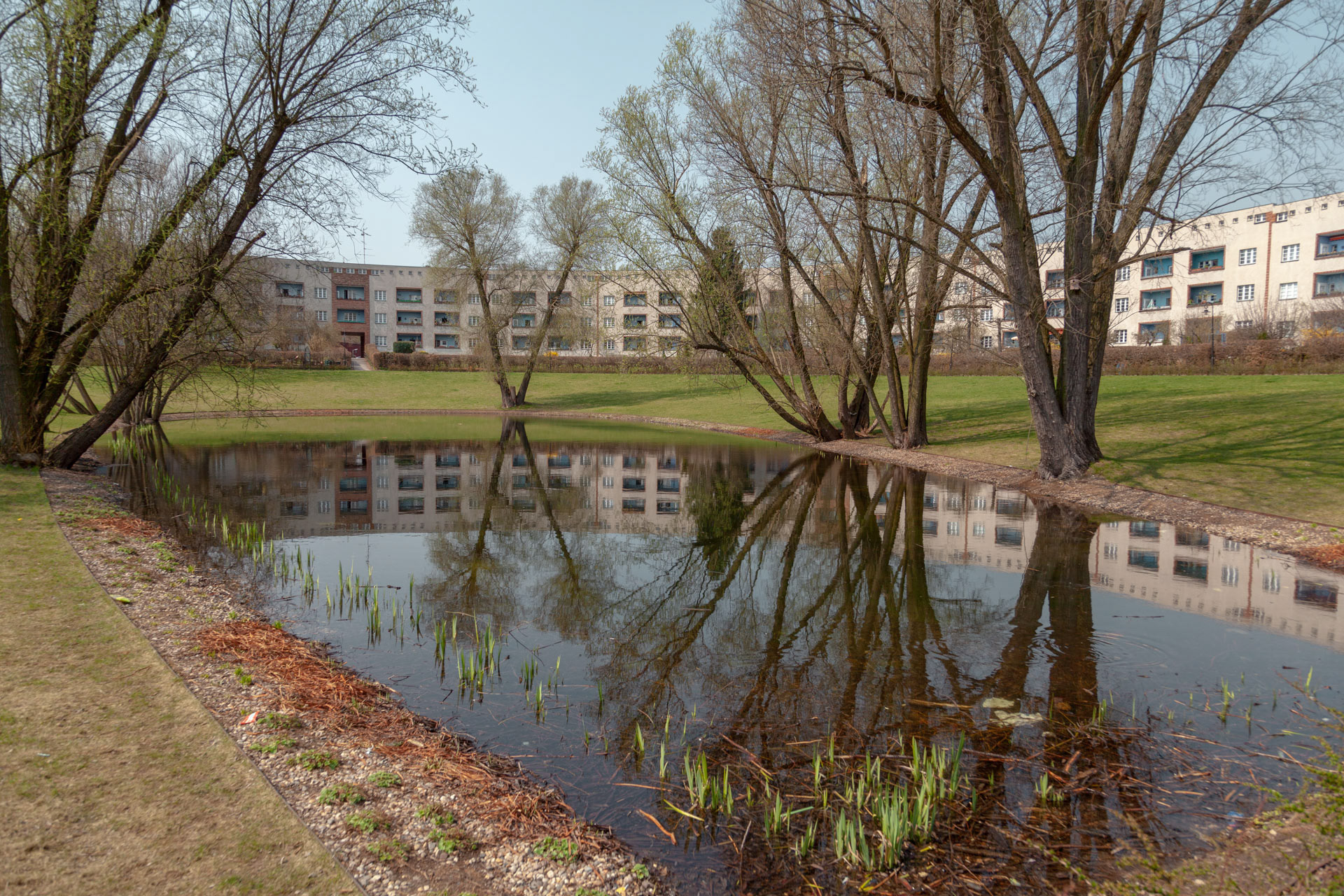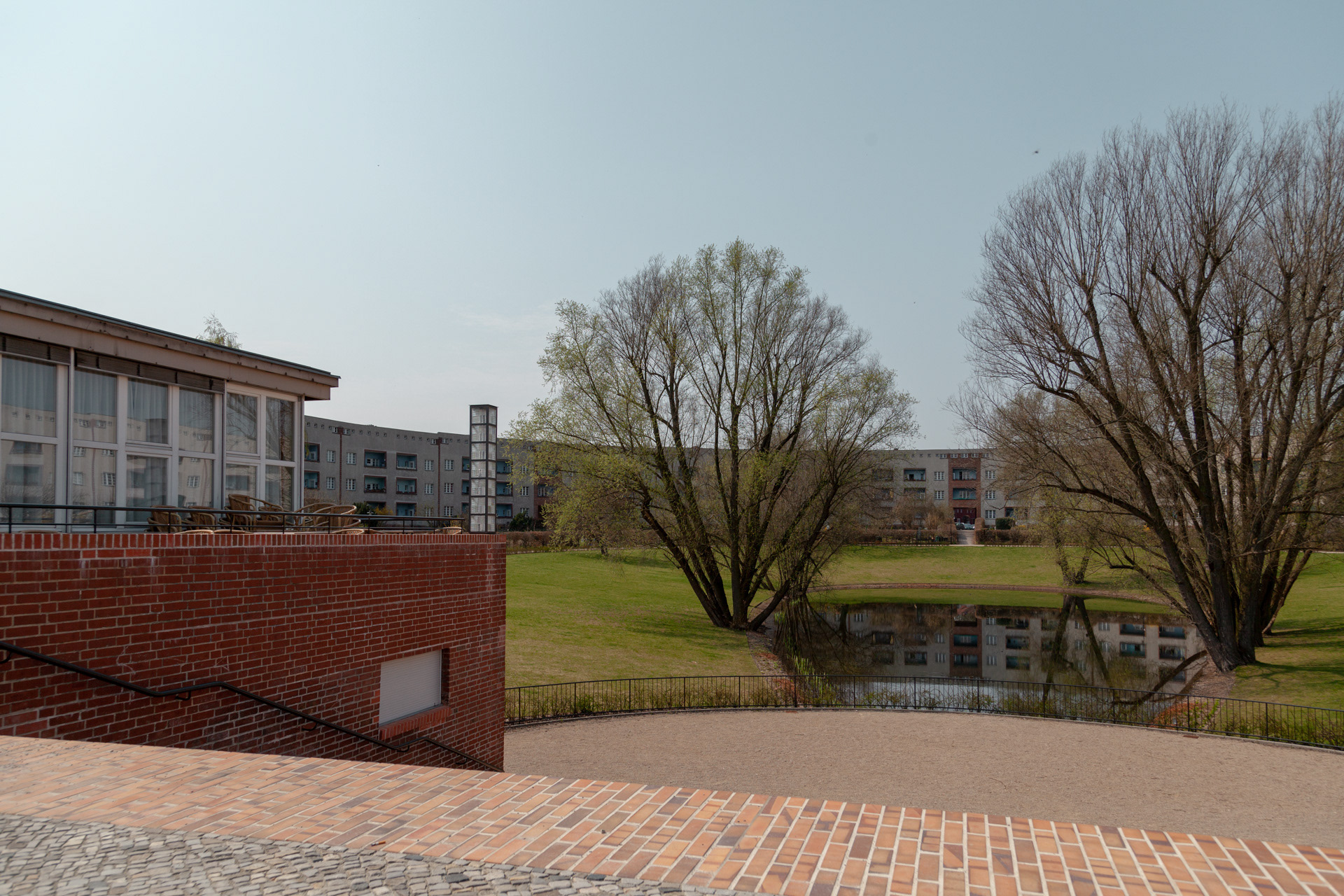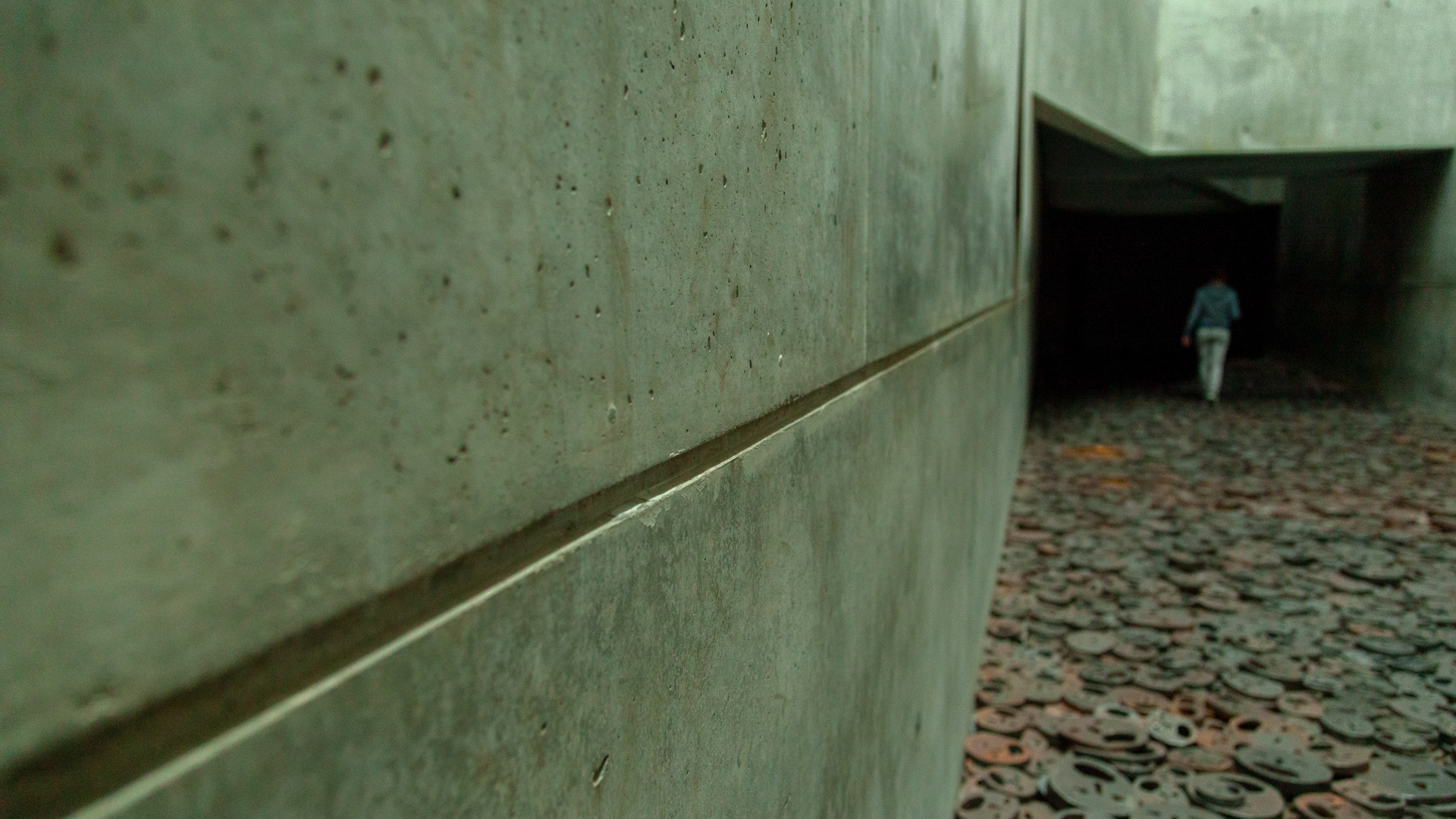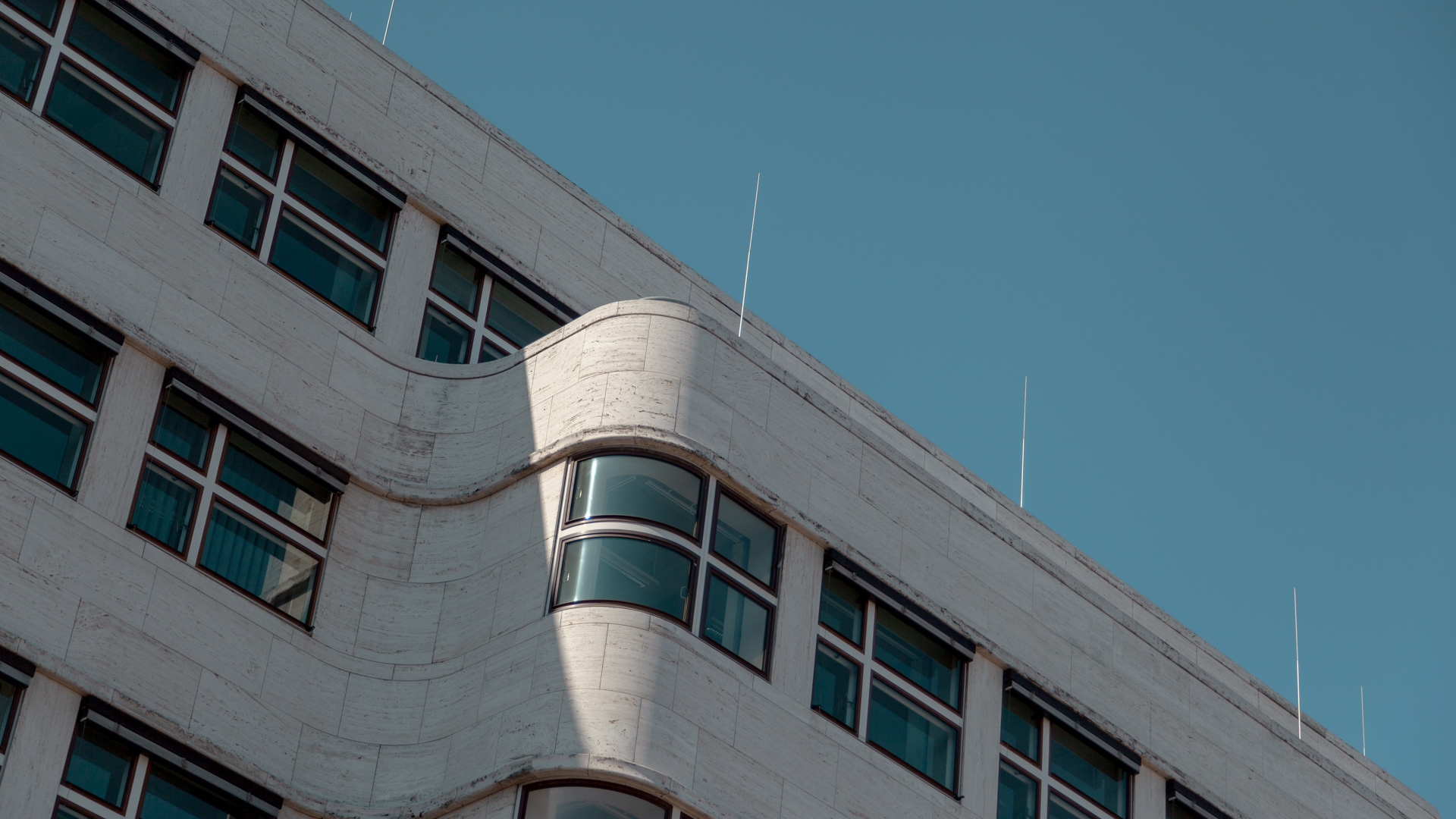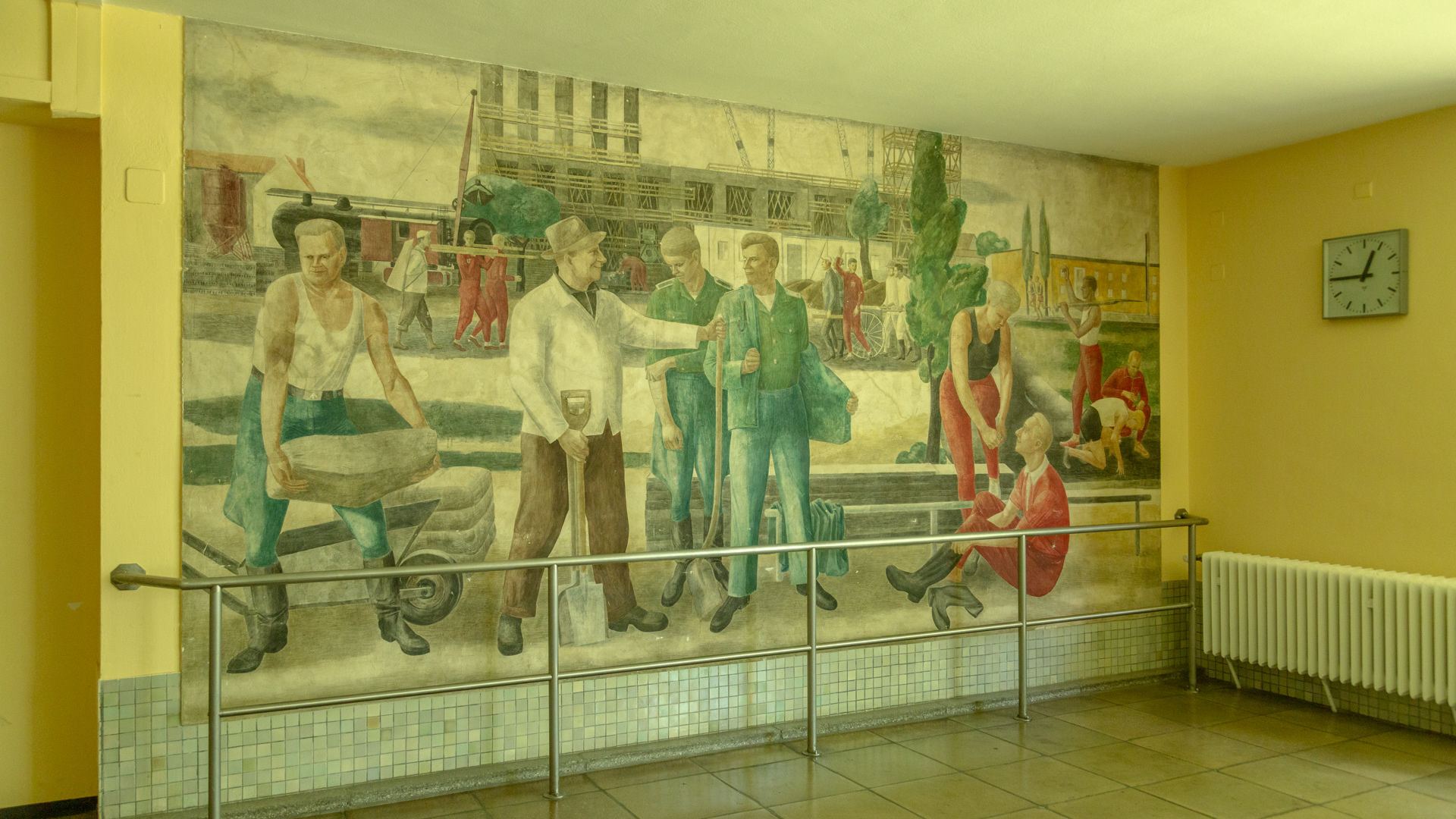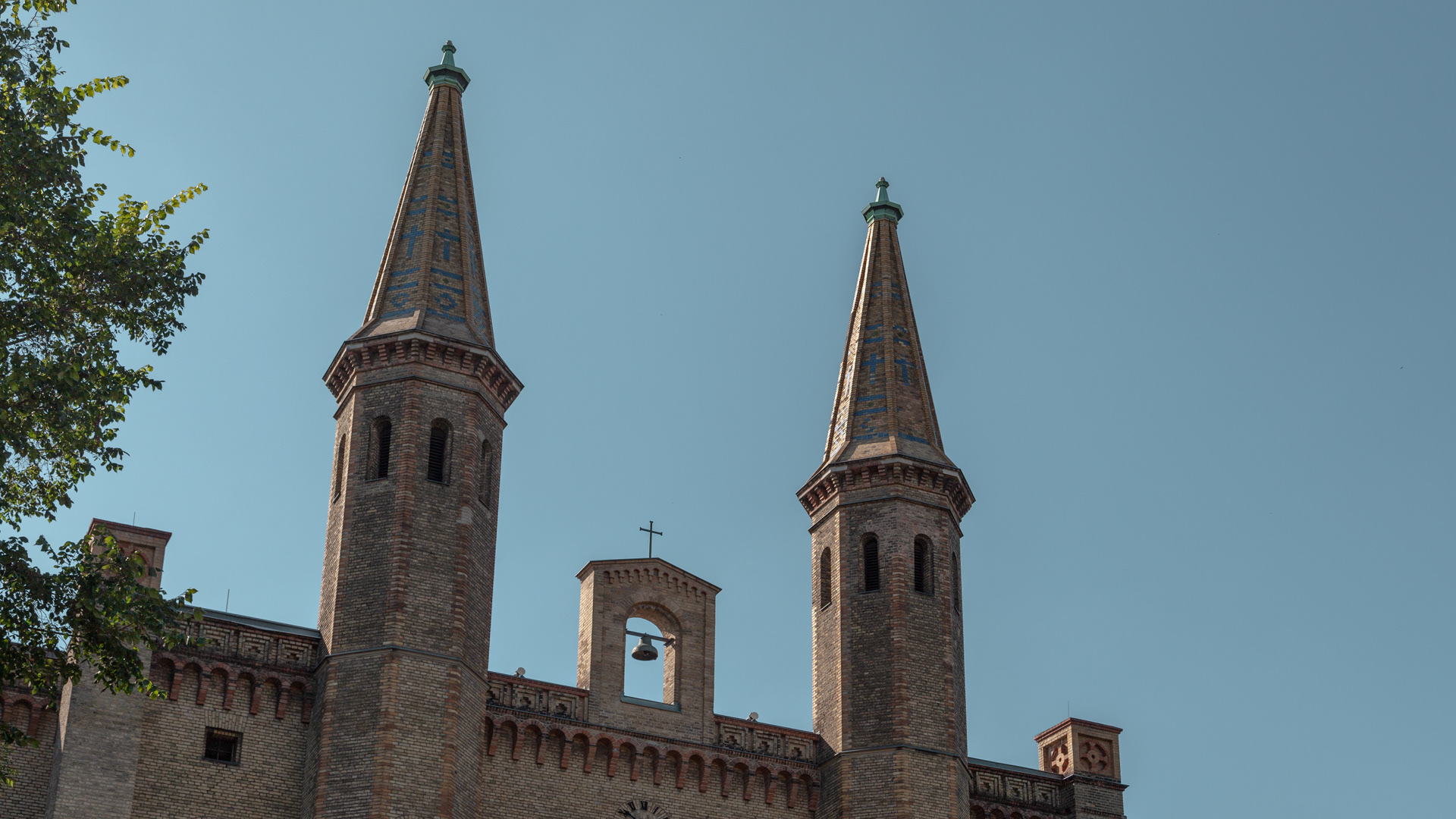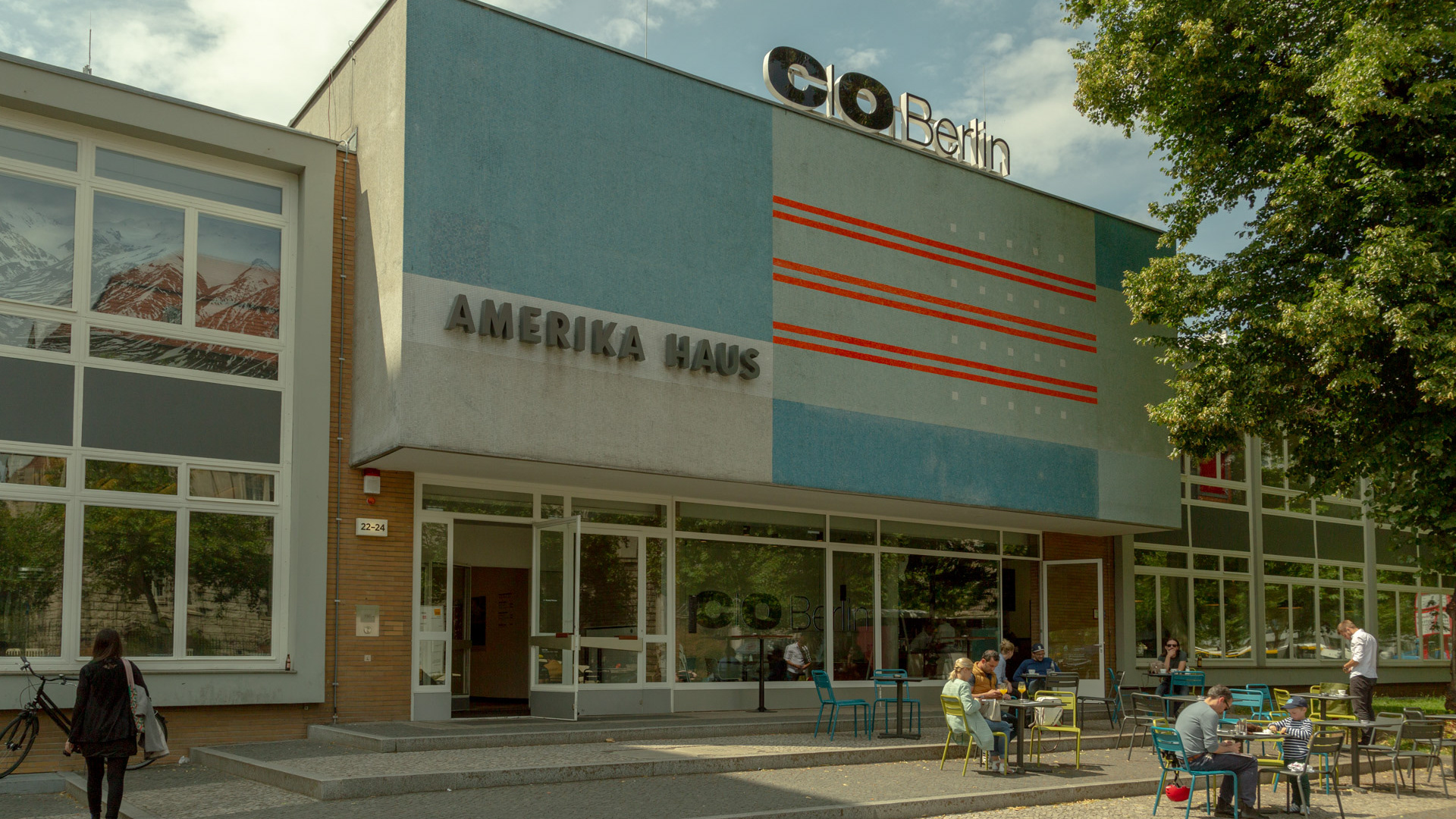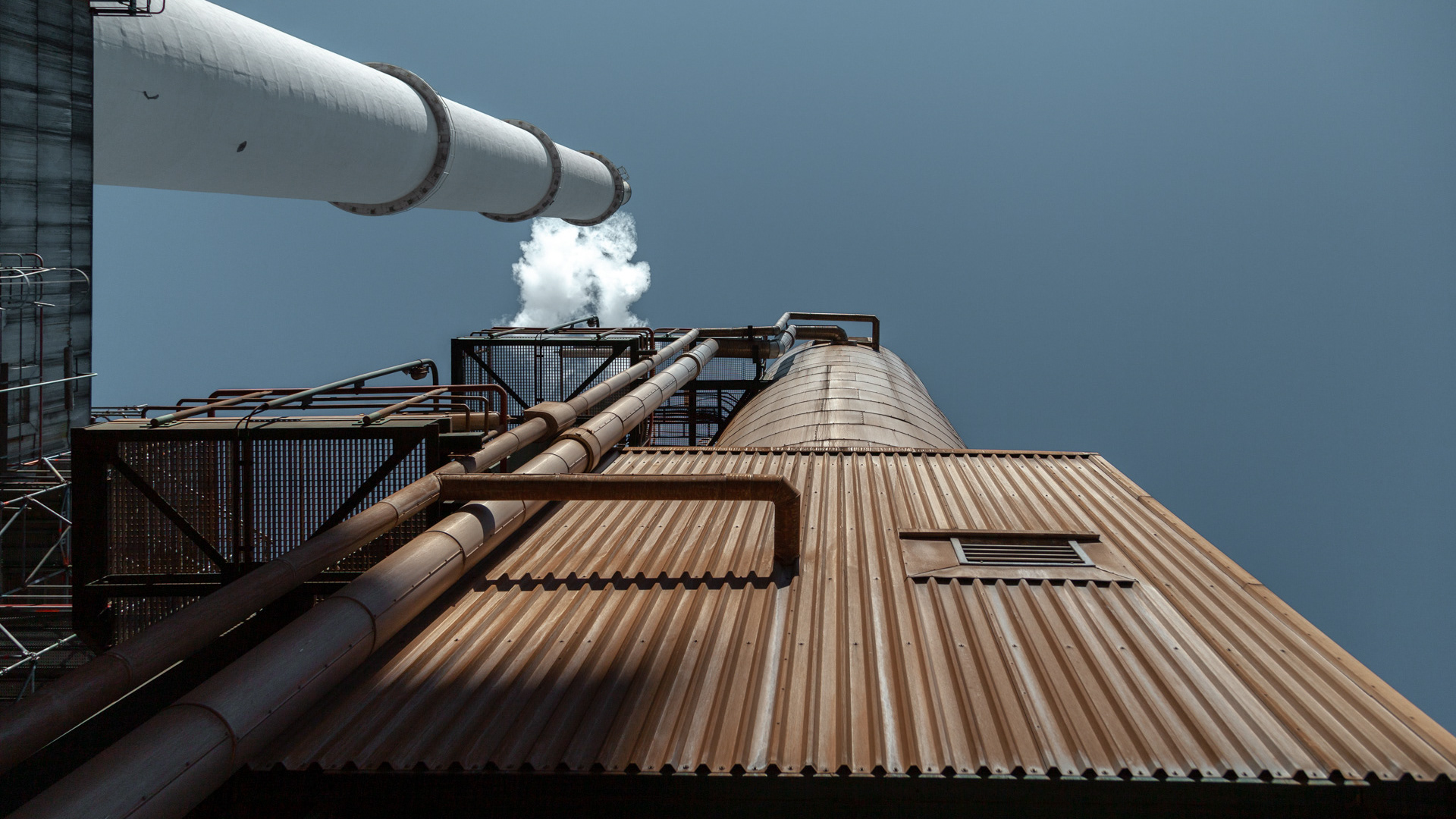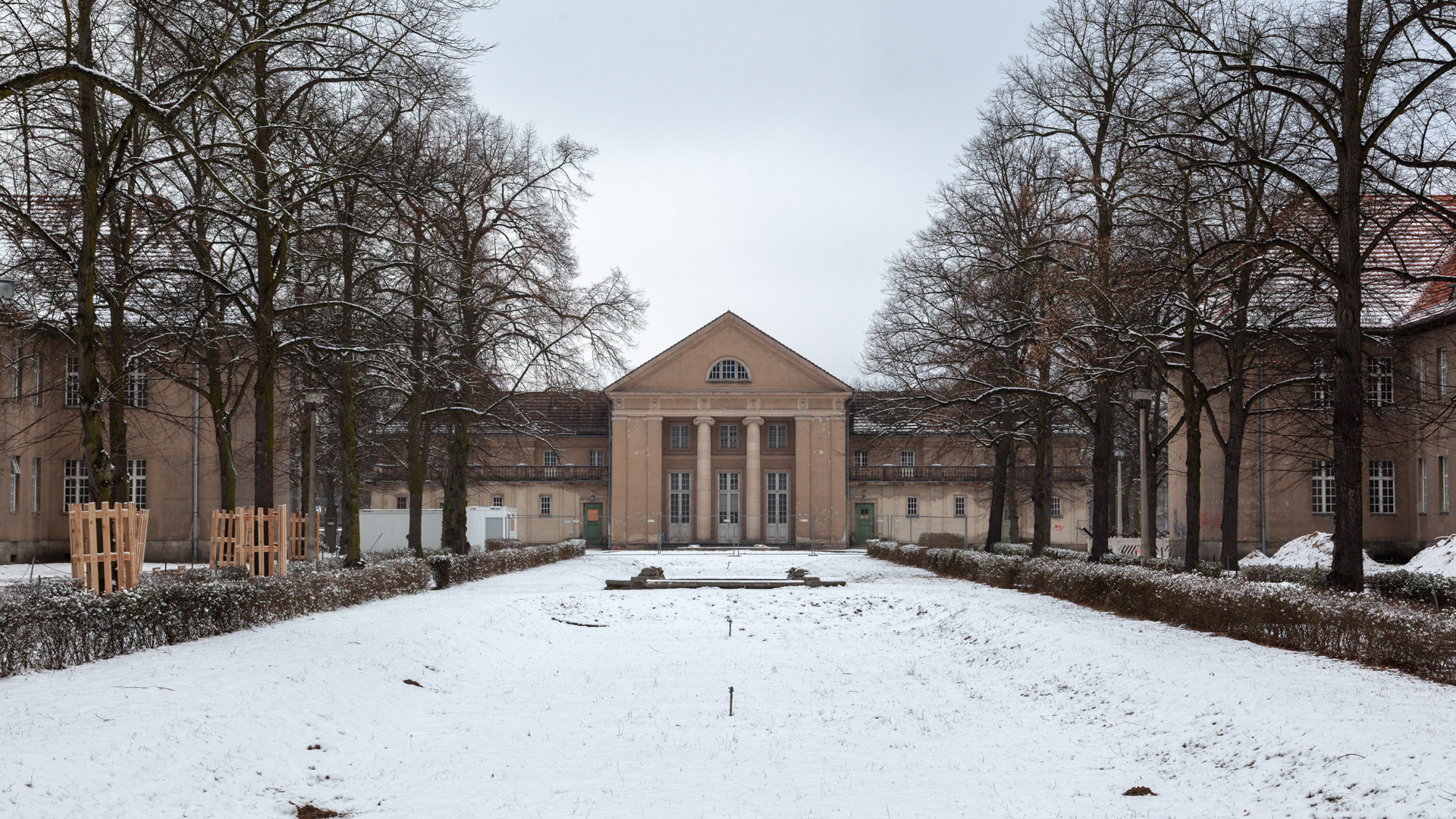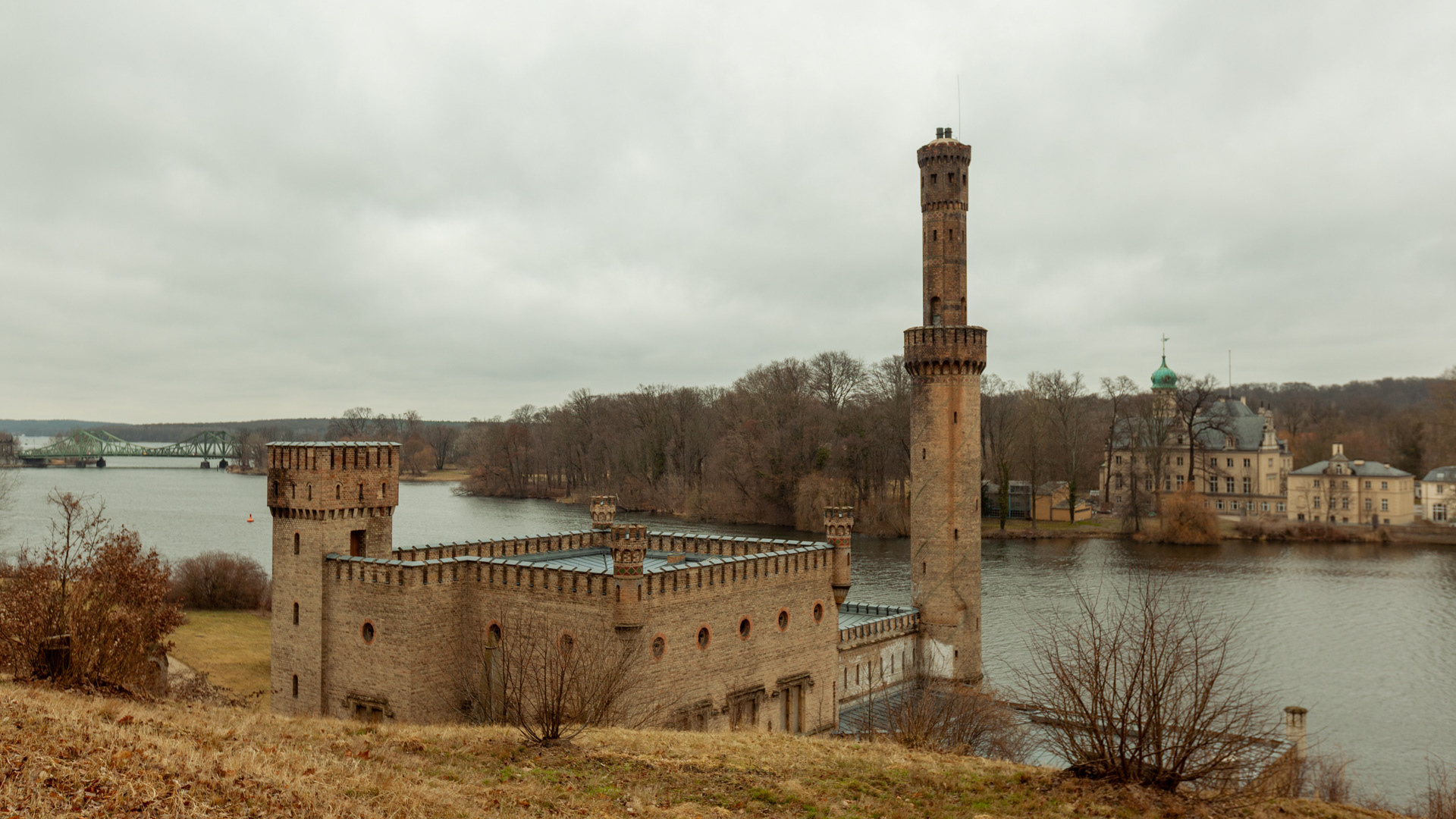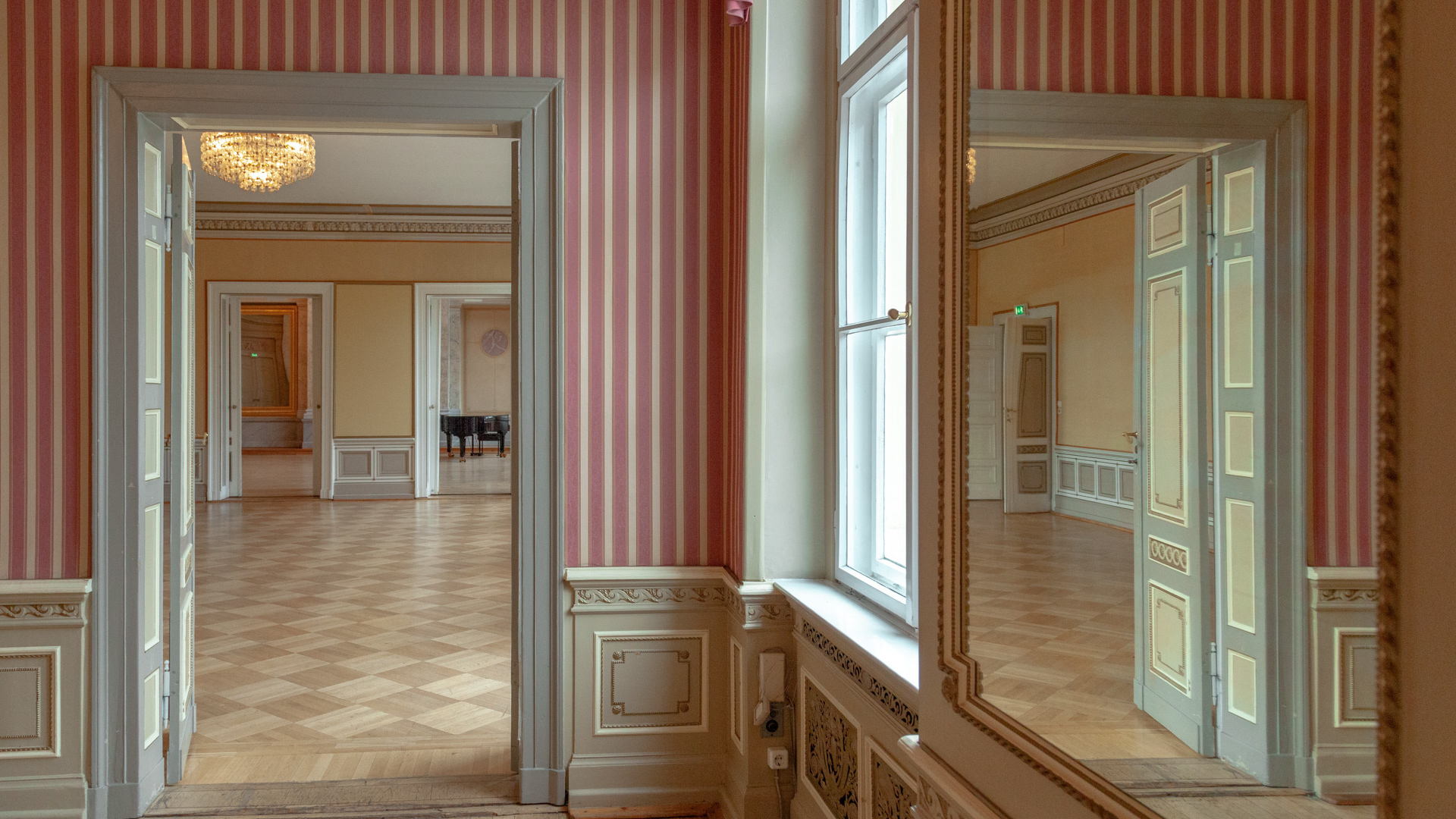The horseshoe settlement, with the main building surrounded by a lake, was designed by Bruno Taut and Martin Wagner from 1925 to 1933.
It is one of the first projects of social housing and part of the United Britz / Fritz Reuter city, the second part was designed by the architect Paul Engelmann and Emil Meyer (1893-1964).
After the First World War, the influx rose to Berlin by the war and because of the general unemployment sharply: the loss of territory and the largely disbanded army led to refugee flows and additional living space. Many homes were severely overcrowded, for example, although a studio with kitchen was considered overcrowded with only five residents. In the early 1920s lacked more than 100,000 homes in the city, which at that time almost exclusively private construction could not cover.
In the 1990s the village was renovated and provided under monument protection. In July 2008, the settlement was included in the UNESCO list of World Heritage along with five others of "Berlin Modernism Housing Estates".
It is one of the first projects of social housing and part of the United Britz / Fritz Reuter city, the second part was designed by the architect Paul Engelmann and Emil Meyer (1893-1964).
After the First World War, the influx rose to Berlin by the war and because of the general unemployment sharply: the loss of territory and the largely disbanded army led to refugee flows and additional living space. Many homes were severely overcrowded, for example, although a studio with kitchen was considered overcrowded with only five residents. In the early 1920s lacked more than 100,000 homes in the city, which at that time almost exclusively private construction could not cover.
In the 1990s the village was renovated and provided under monument protection. In July 2008, the settlement was included in the UNESCO list of World Heritage along with five others of "Berlin Modernism Housing Estates".
